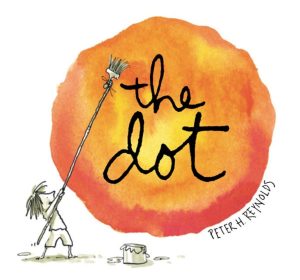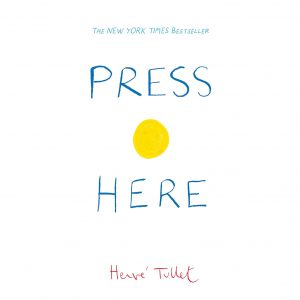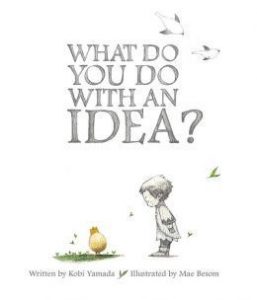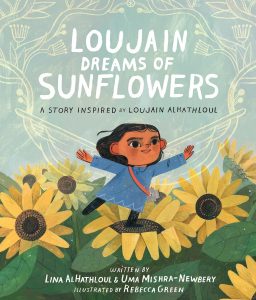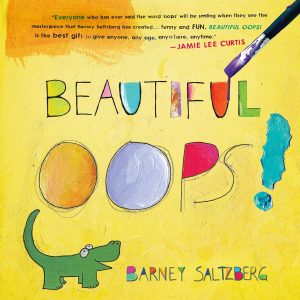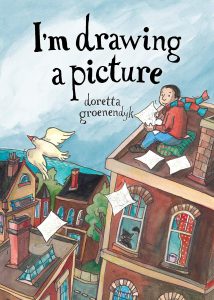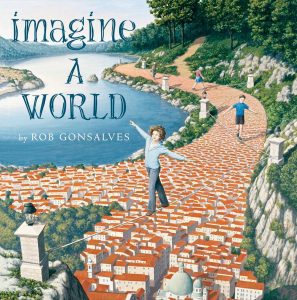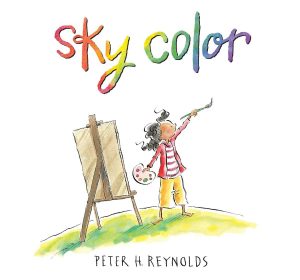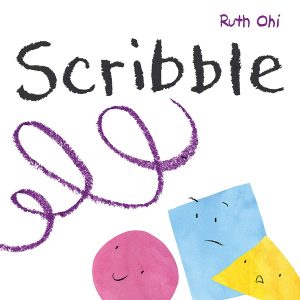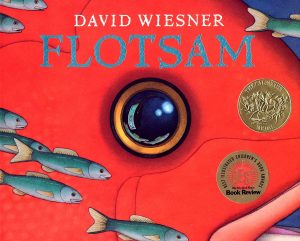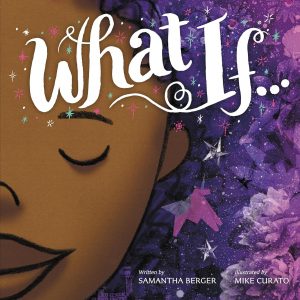Thinking is one of the three Core Competencies in the BC curriculum. Creative Thinking is one of two sub-competencies in this area. Listed below are selected resources for teachers, picture books, fiction, and non-fiction related to Creative Thinking.
La réflexion est l’une des trois compétences de base du programme d’études de la Colombie-Britannique. La pensée créative est l’une des deux sous-compétences de ce domaine. Vous trouverez ci-dessous une sélection de ressources pour les enseignants, des livres d’images, des ouvrages de fiction et des ouvrages non romanesques liés à la pensée créative.
Ressources pour les enseignant (Teacher Resources)
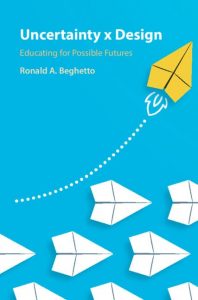 Uncertainty x design: educating for possible futures,
Uncertainty x design: educating for possible futures,
by Ronald Beghetto
Niveau scolaire (Grade level): K – 12
This book seeks to help young people learn how to become the creative authors of their own lives by approaching current and future uncertainties with an unshakeable sense of possibility. It describes how students can benefit from opportunities to develop their confidence and competence in taking creative action in the face of uncertainty by design.
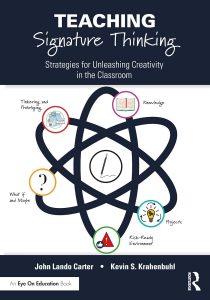 Teaching signature thinking: strategies for unleashing creativity in the classroom,
Teaching signature thinking: strategies for unleashing creativity in the classroom,
by Lando Carter & Kevin Krahenbuhl
Niveau scolaire (Grade level): K – 12
How do you help students uncover and hone their innate talents to create works that are uniquely their own, works worthy of their signatures? This unique new book guides teachers with practical, research-based strategies that can be used to make creativity the new normal in classrooms. You’ll learn how to equip students with the knowledge necessary to innovate in a field, and how to help students embrace a risk-ready environment.
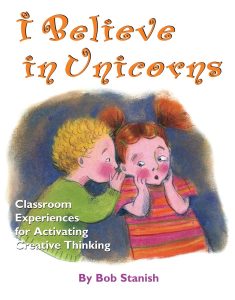 I Believe in Unicorns: Classroom Experiences for Activating Creative Thinking,
I Believe in Unicorns: Classroom Experiences for Activating Creative Thinking,
by Bob Stanish
Niveau scolaire (Grade level): K – 12
Take your students on an imagination journey! Filled with thrilling activities that build creativity in your students, I Believe in Unicorns is a must have for teachers interested in encouraging imaginative thinking. Get an elephant down from a tree, build a monstrous (and odorous) “smelt,” evaluate the job performance of an octopus who moonlights as a lifeguard, or remove a porcupine from your lunchbox!
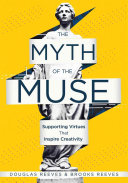 The myth of the muse: Supporting virtues that inspire creativity,
The myth of the muse: Supporting virtues that inspire creativity,
by Douglas Reeves and Brooks Reeves
Niveau scolaire (Grade level): K – 12
The authors argue that creativity is not necessarily spontaneous or inborn, but rather a process that can be cultivated in students. They discuss seven approaches and mindsets that can inspire creativity: curiosity, versatility, synthesis, discipline, collaboration, experimentation, and tenacity.
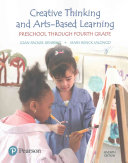 Creative thinking and arts-based learning: Preschool through fourth grade,
Creative thinking and arts-based learning: Preschool through fourth grade,
by Joan Packer Isenberg and Mary Renck Jalongo
Niveau scolaire (Grade level): K – 12
The authors suggest practical ways for teachers to promote creativity, play, art, music/movement/dance, and drama for all children. They examine the teacher’s role from a philosophical, pedagogical, and curricular stance by addressing key components, including the classroom environment, materials and resources, child guidance, assessment, and more.
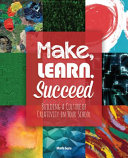 Make, learn, succeed: Building a culture of creativity in your school,
Make, learn, succeed: Building a culture of creativity in your school,
by Mark Gura
Niveau scolaire (Grade level): K – 12
This book suggests that with the variety of technological resources currently available, developing creativity is not only possible but practical and effective. In addition to providing strategies for incorporating creativity across the curriculum, the author gives examples of how to use Maker, STEAM, Robotics, and Gaming approaches in instruction.
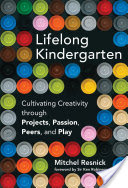 Lifelong kindergarten: Cultivating creativity through projects, passion, peers, and play,
Lifelong kindergarten: Cultivating creativity through projects, passion, peers, and play,
by Mitchel Resnick
Niveau scolaire (Grade level): K – 12
The author argues that rather than kindergarten becoming more like the rest of school, the rest of school should become more like kindergarten, fostering imagination, creativity, play, sharing, and reflecting. New technologies and strategies for engaging students in creative learning experiences are presented.
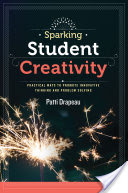 Sparking student creativity: Practical ways to promote innovative thinking and problem solving,
Sparking student creativity: Practical ways to promote innovative thinking and problem solving,
by Patti Drapeau
Niveau scolaire (Grade level): K – 12
This book shows teachers how creative lessons can meet and extend the expectations of curriculum standards such as the Common Core State Standards; how to incorporate creativity and assessment into daily classroom practices; how to develop a “Creativity Road Map” to guide instruction; and how to design lessons that prompt and support creative thinking.
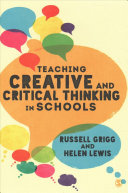 Teaching creative and critical thinking in schools,
Teaching creative and critical thinking in schools,
by Russell Grigg and Helen Lewis
Niveau scolaire (Grade level): K – 12
This book provides guidance on how to develop creative and critical thinking through your classroom teaching. Key coverage includes classroom-ready ideas to stimulate higher-order thinking, how to think critically and creatively across all areas of the curriculum, and philosophical approaches that give students the space to think and inquire. Case studies from primary, secondary and special schools are included.
Les livres d’images (Picture Books)
by Peter H. Reynolds
Niveau scolaire (Grade level): Préscolaire – 5 (Pre-K – 5)
Vashti believes that she cannot draw, but her art teacher’s encouragement leads her to change her mind and she goes on to encourage another student who feels the same as she had.
by Hervé Tullet; translated by Christopher Franceschelli
Niveau scolaire (Grade level): Préscolaire – 1 (Pre-K – 1)
Press the yellow dot on the cover of this interactive children’s book, follow the instructions within, and embark upon a magical journey. Each page of this surprising touch book instructs the reader to push the button, shake it up, tilt the book, and who knows what will happen next!
by Kobi Yamada; illustrated by Mae Besom
Niveau scolaire (Grade level): Préscolaire – 3 (Pre-K – 3)
This is the story of one brilliant idea and the child who helps to bring it into the world. As the child’s confidence grows, so does the idea itself. And then, one day, something amazing happens. This is a story for anyone, at any age, who’s ever had an idea that seemed a little too big, too odd, too difficult.
by Lina AlHathloul & Uma Mishra-Newbery; illustrated by Rebecca Green
Niveau scolaire (Grade level): Préscolaire – 3 (Pre-K – 3)
Loujain watches her beloved baba attach his feather wings and fly each morning, but her own dreams of flying face a big obstacle: only boys, not girls, are allowed to fly in her country. Yet despite the taunts of her classmates, she is determined to do it–especially because Loujain loves colors, and only by flying can she see the color-filled field of sunflowers her baba has told her about.
by Barney Saltzberg
Niveau scolaire (Grade level): Préscolaire – 3 (Pre-K – 3)
It’s okay to make a mistake. In fact, hooray for mistakes! A mistake is an adventure in creativity, a portal to discovery. A spill doesn’t ruin a drawing—not when it becomes the shape of a goofy animal. And an accidental tear in your paper? Don’t be upset about it when you can turn it into the roaring mouth of an alligator.
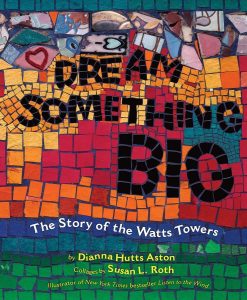 Dream something big: The story of the Watts Towers,
Dream something big: The story of the Watts Towers,
by Diana Hutts Aston; illustrated by Susan L. Roth
Niveau scolaire (Grade level): Préscolaire – 3 (Pre-K – 3)
In Watts, California, over a period of many years, a man known to all as Uncle Sam spends his free time collecting broken bits of pottery, glass, and other scraps and turning them into a work of art.
by Doretta Groenendyk
Niveau scolaire (Grade level): Préscolaire – 7 (Pre-K – 7)
A collaboration between artwork and text, this whimsical book has a different inspirational idea on each page, with a scene that each “artist” imagines. The concept is based on Doretta Groenendyk’s experience working with children in schools and trying to inspire them to be creative in all forms of mediums of art.
by Rob Gonsalves
Niveau scolaire (Grade level): Préscolaire – 3 (Pre-K – 3)
Illustrations and evocative text show how imagination can reveal the extraordinary in various places, from taking a swim in a salty sky to soaring over submerged lands under the sea. With a little imagination, amazing landscapes and adventures can be found almost anywhere.
by Peter H. Reynolds
Niveau scolaire (Grade level): Kindergarten – 4
Marisol loves to paint. So when her teacher asks her to help make a mural for the school library, she can’t wait to begin! But wait-how can Marisol ever make a sky without blue paint? After gazing out the bus window and watching from her porch as day turns into night, she closes her eyes and starts to dream.
by Ruth Ohi
Niveau scolaire (Grade level): Préscolaire – 3 (Pre-K – 3)
Circle loves to roll around and around. Solid Square likes to sit still and strong. Triangle can celebrate all her good points, and always knows which direction to go. But when Scribble suddenly dashes through their ordered world all messy lines and energy Circle, Square and Triangle don’t know what to think.
by David Wiesner
Niveau scolaire (Grade level): Préscolaire – 2 (Pre-K – 2)
On a trip to the beach, a science-minded boy makes a discovery that sparks his imagination like never before. A sudden camera and development of film allows him to use his microscope to discover a mini world of layers within the photos.
by Samantha Berger; illustrated by Mike Curato
Niveau scolaire (Grade level): Préscolaire – 2 (Pre-K – 2)
What if there were no pencils or paper to draw with? What would you do then? One little girl imagines all the ways she can express herself, from sculpting and building to singing and dreaming.
Trouver d’autres ressources
Voici quelques conseils pour trouver d’autres ressources dans ce domaine :
- Sur la page principale du site de la bibliothèque de l’UBC, utilisez la boîte de recherche générale pour rechercher des matériaux à travers toutes les succursales de la bibliothèque de l’UBC.
- Pour limiter vos résultats aux matériels disponibles à la Bibliothèque de l’éducation, visitez le site web de la Bibliothèque de l’éducation et effectuez une recherche à l’aide de la case “Search Education Resources” située dans la bande à gauche de l’écran.
- Remarque : les ressources étant principalement cataloguées en anglais, les termes ci-dessous donnent généralement plus de résultats que les recherches effectuées en français. Vous pouvez filtrer votre liste de résultats par langue dans la barre latérale de gauche.
- Utilisez des termes de recherche spécifiques, tels que
- “creative teaching OR creative ability OR creative activities AND children”, “creative thinking AND early childhood education”, “self confidence OR inspiration OR imagination AND picturebooks”, ou “drawing AND thinking AND children”
- Pour trouver des plans de cours, incluez “lesson plans”, “lesson planning”, or “activity programs” dans vos termes de recherche.
Finding More Resources
To find more resources in this area, try the following:
- Search using the General tab on the UBC Library website to look for material in all UBC Library branches.
- Search using “Search Education Resources” box in the left hand bar on the Education Library website to limit your results to physical materials in the Education Library.
- Use specific search terms, such as
- “creative teaching OR creative ability OR creative activities AND children”, “creative thinking AND early childhood education”, “self confidence OR inspiration OR imagination AND picturebooks”, or “drawing AND thinking AND children”
- To find lesson plans, include “lesson plans”, “lesson planning”, or “activity programs” in your search terms.
